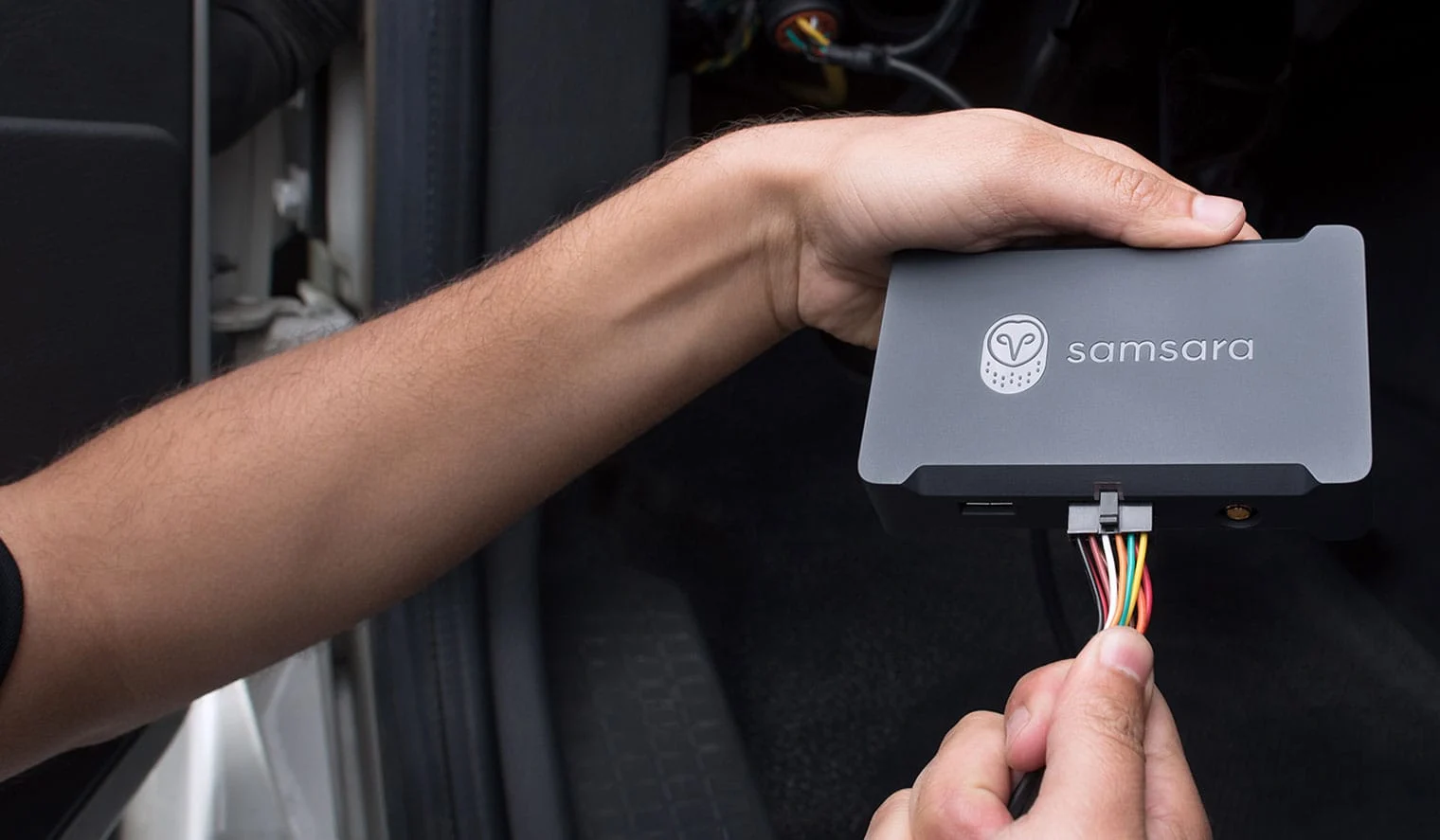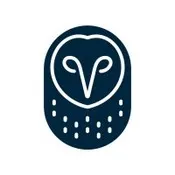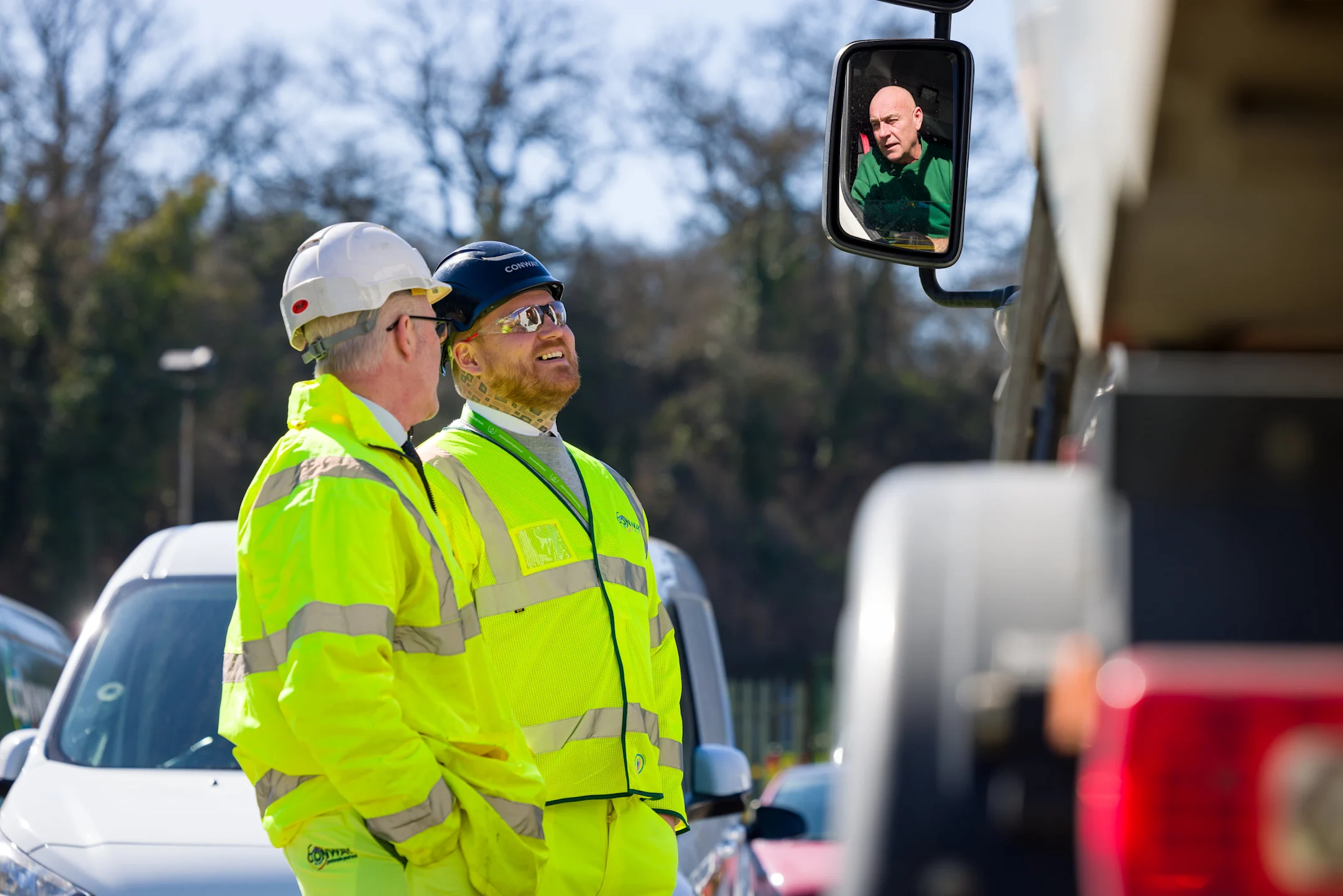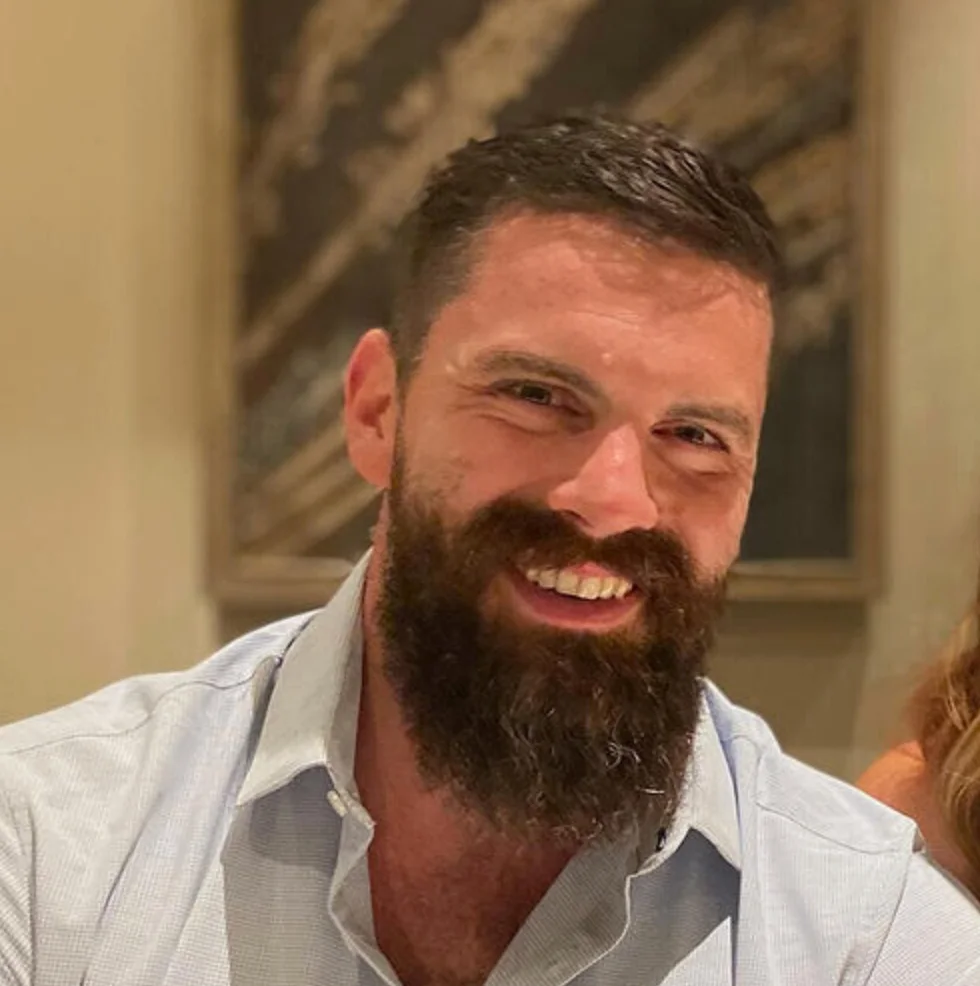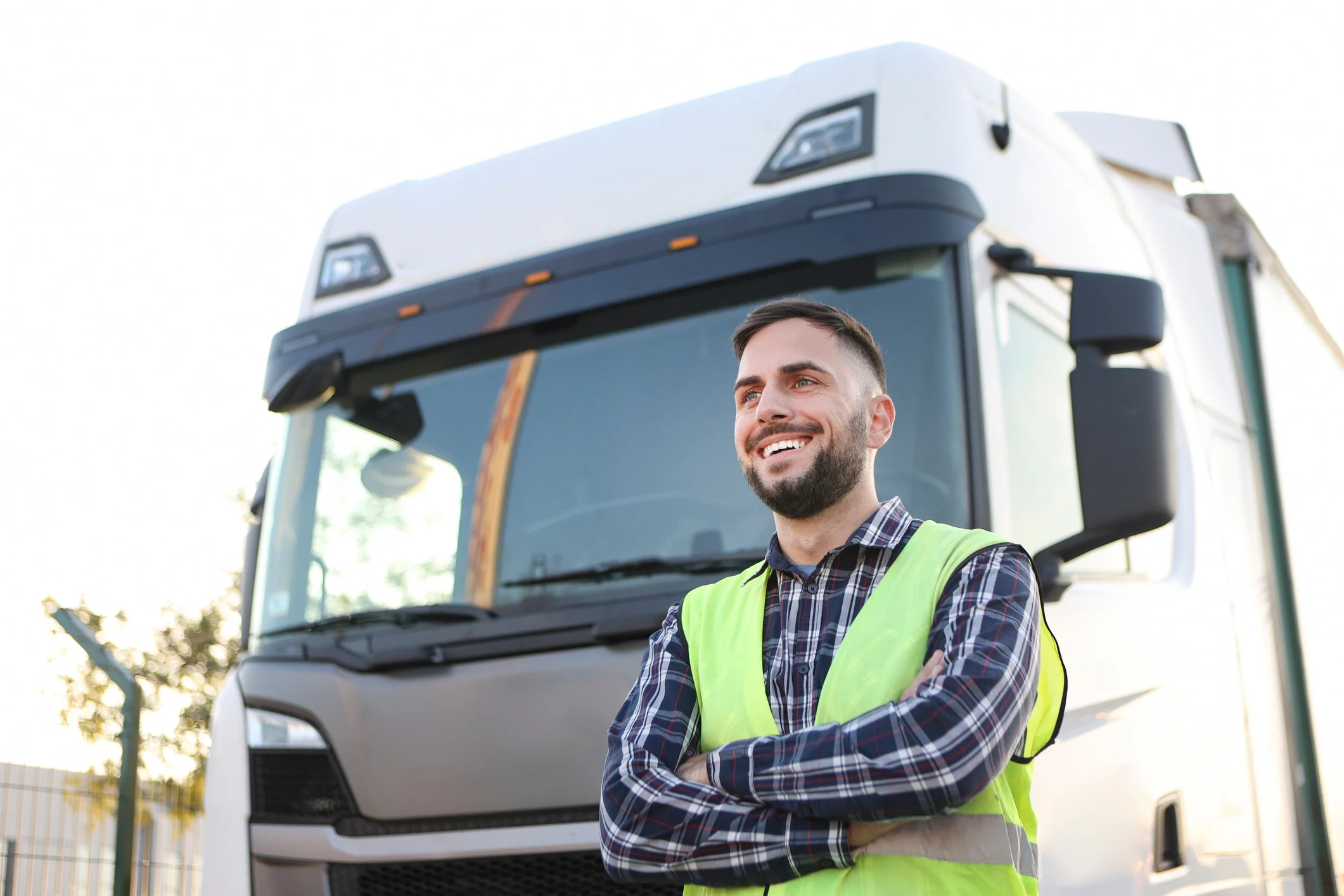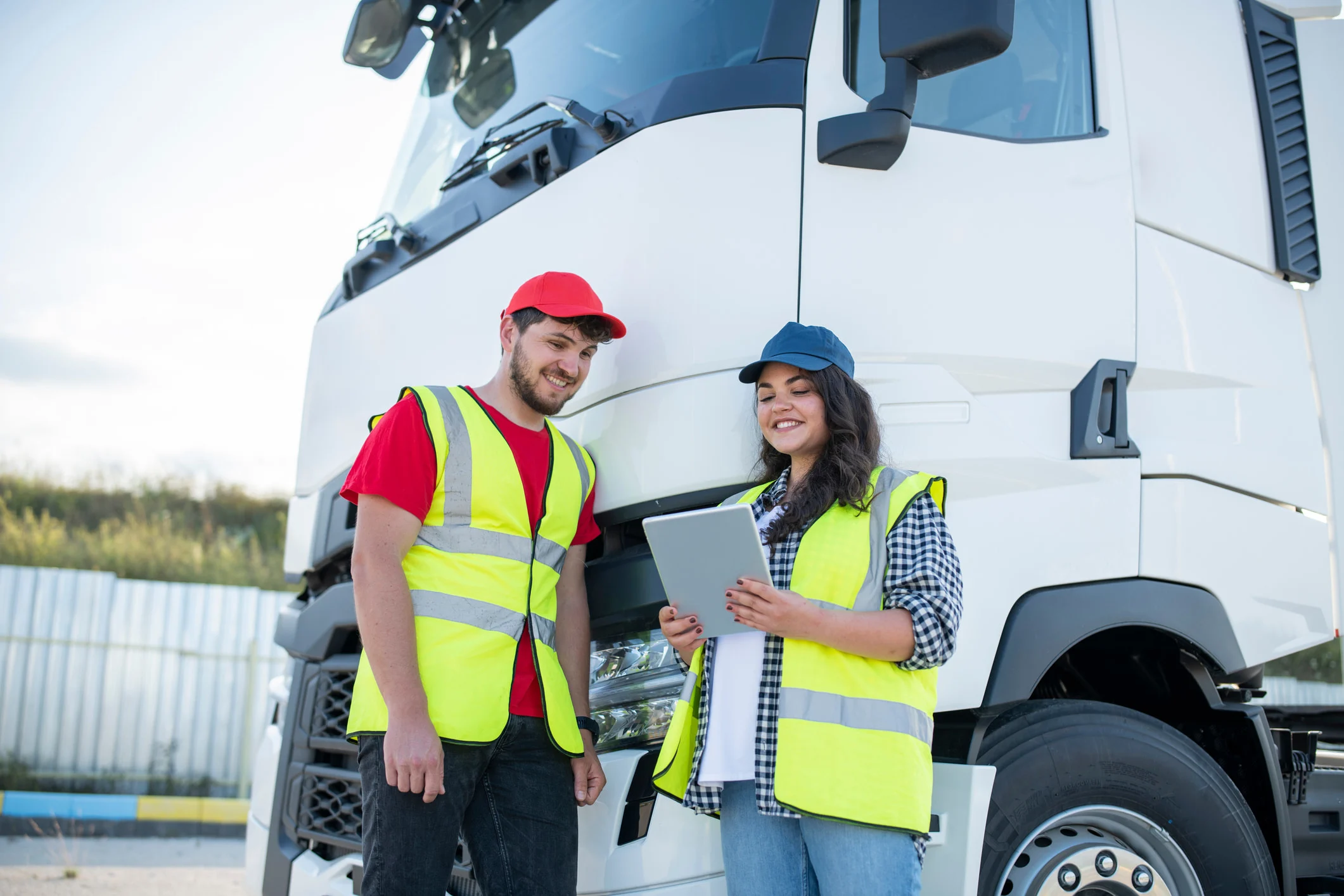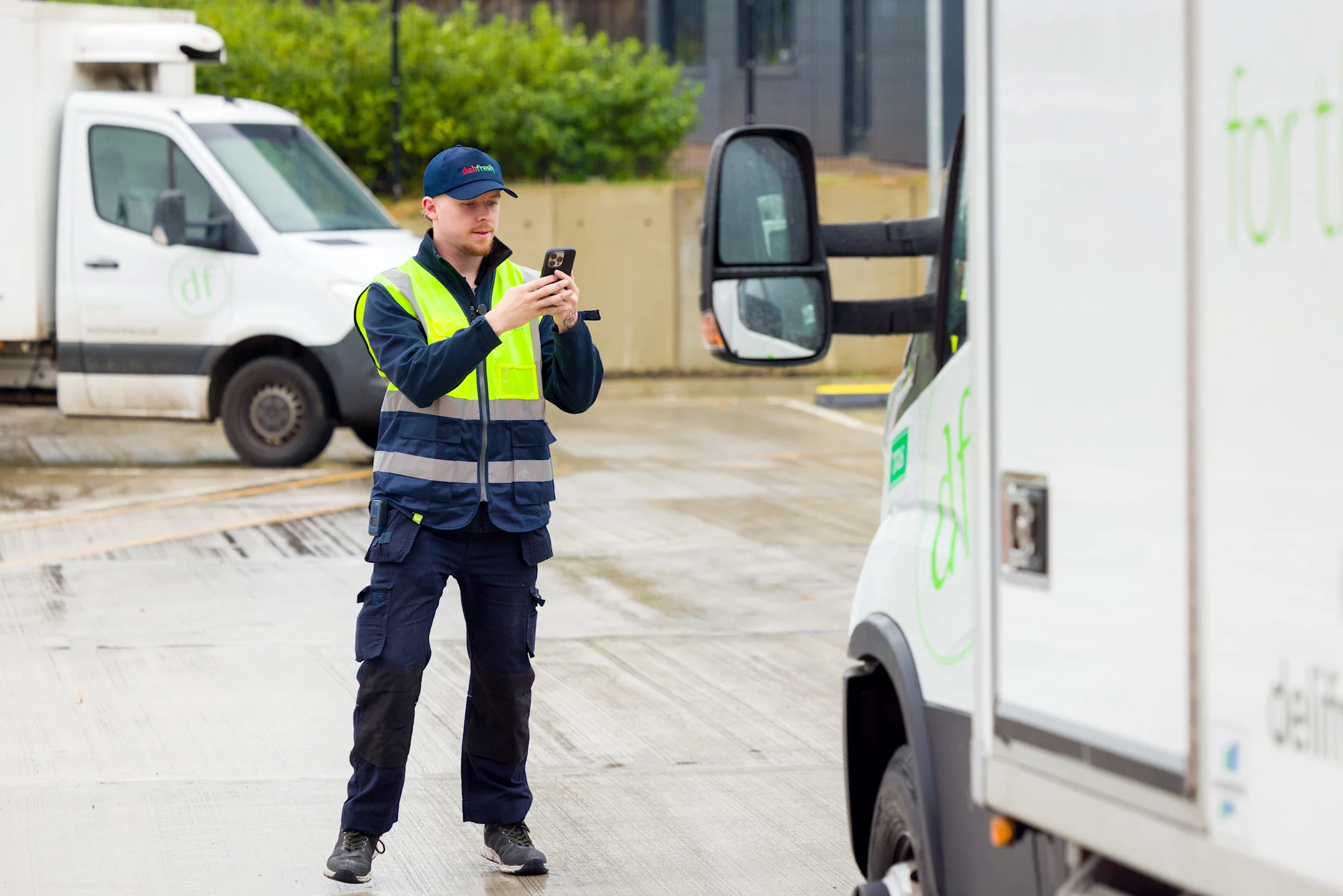Perspectives
Driver engagement ramps up as Lanes Group shifts focus to positive reinforcement
June 10, 2025

Get the latest from Samsara
Subscribe nowLanes Group is the leading wastewater utility solutions provider – and the largest independent drainage specialist – in the UK. In February 2023, Sapphire Solutions – part of the Lanes Group – was migrated across to Samsara’s Dashboard as part of a broader initiative to improve safety across the whole business. Here, Amber Kirkby, Fleet Systems Team Leader, Lanes Group, explains how they turned early scepticism into a culture of recognition, reward, and genuine driver engagement.
Can you set the scene regarding the roll-out of Samsara technology at Lanes and what you were looking to achieve?
When I joined Lanes in 2023, the task was straightforward – if a little daunting. We had to roll out dual-facing dash cams, vehicle trackers, and the Samsara Driver App to 650 drivers. That’s a major task in itself, but it was made the more taxing because many of the drivers had never had that level of visibility before.
What happened?
It’s fair to say that we received some pushback from drivers who thought it was an invasion of their privacy. We took their concerns on board and realised we couldn’t approach this in a heavy-handed way. So we focused on how we could reframe the use of cameras. That’s why we shifted the emphasis away from “we’re watching you” to “we want to recognise all the good things you’re doing”. That shift in tone made all the difference.
So, what happened next?
Well, we started with the driver rewards programme. Every month, we use the Samsara dashboard to look at performance across the fleet – things like safety scores, speed limit compliance, and driving improvements. The top drivers get cash rewards – nothing that’s going to break the bank – but something that actually means something to them.
We didn’t just want to recognise the best drivers. We also wanted to flag those who had made the most progress. So, right from the beginning, we made sure to call out the most improved drivers, not just the top three. Because sometimes the biggest change comes from someone who’s been struggling but manages to turn things around. After all, they deserve recognition too.
You’ve also mentioned team-level recognition. Why was that important?
We realised it wasn’t just about individual recognition. It was also about a shift in culture. So we started doing a monthly newsletter that goes out across the group. It shares the top scores and the most improved drivers, as well as the team of the month. They don’t win anything – it’s just about acknowledging progress and effort.
This might not seem like a lot to some people reading this. But getting a ‘shout out’ like this is great for morale and helps to build a sense of community. It makes people feel like they’re part of something, especially in a job where you’re often out on your own.
What role has Samsara’s new Recognition feature played in all this?
It’s made the process much smoother. Before, we were doing a lot of this work manually – pulling data, spotting patterns, sending emails – that kind of thing. Now, the Recognition feature does all that for us automatically and lets us know who’s doing well. We no longer have to go hunting for this information. It highlights things like streaks in safe driving, focused driving, and fuel efficiency. Then we can send personalised messages to drivers using the Samsara Driver App.
By focusing on positive reinforcement through Samsara, we’ve seen a significant boost in driver morale. Rewarding safe behaviours motivates our team and fosters a stronger safety culture where good practices are celebrated.
The fact that it’s built into our existing workflow and not on a separate platform means it’s easy to use and scalable across the group. We’ve already rolled it out to other sectors of the business, and it’s going into even more this year.
Have you seen concrete results from this approach?
Absolutely! – both in terms of the data we receive and in the attitude. Mobile phone usage and inattentive driving is down 92% over seven months. We’re also seeing fewer repeat safety events and better driver engagement overall. Drivers are logging into the app, checking their scores, and asking how they’re doing. There’s a real buzz about this and it’s become a two-way conversation now.
You’ve also been doing some interesting things around driver wellbeing, haven’t you?
That’s right. Alongside the recognition work, we’ve built wellbeing forms into the driver workflow. When they sign in for a shift, they’re asked how they’re feeling. If someone flags that they’re struggling, it triggers an alert to our team so we can follow up. We’ve also trained wellbeing champions who are there if people need to talk. For me, it’s another way of showing that drivers aren’t just numbers – they’re people, and we care about them.
What advice would you give to other fleet leaders introducing this kind of tech?
You need to make it about people, not just performance. If drivers think you’re only using the tech to catch them out, you’ll meet resistance. You’ll get pushback. But if they see that it’s about supporting them, recognising effort, and keeping them safe, they’ll get on board. That’s when it works.
Get the latest from Samsara
Subscribe now